Place Value
In the number 10 we have one lot of ten and zero ones.
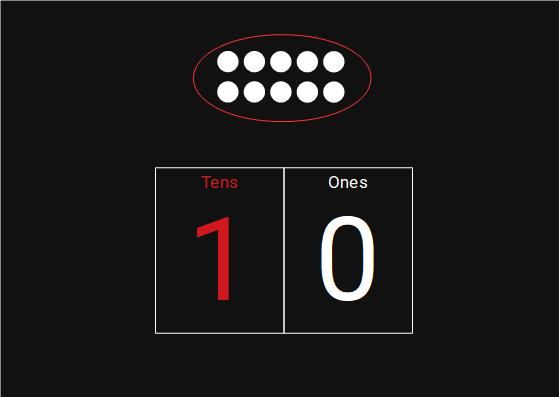
In the number 23 we have 2 lots of ten and 3 ones. 20 + 3 = 23
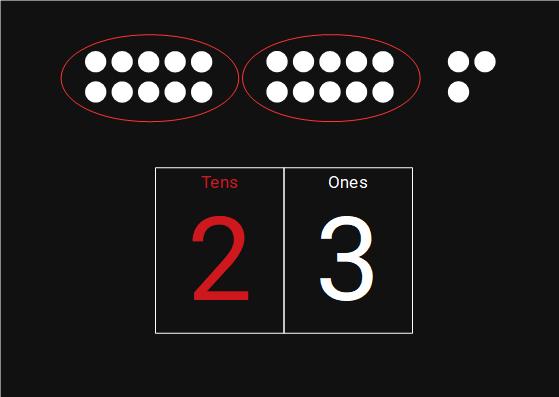
In the number 59 we have 5 lots of ten and 9 ones. 50 + 9 = 59
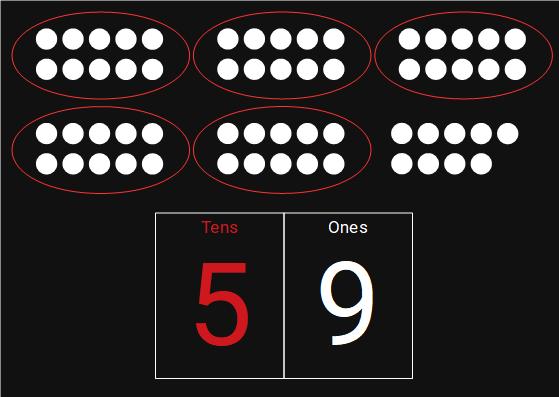
In the number 136 we have 1 lot of 100, 3 tens and 6 ones. 100 + 30 + 6 = 136
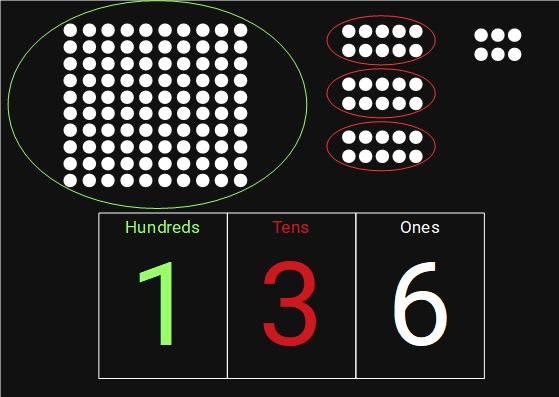
For bigger numbers we use more and more columns. Each column is ten times bigger than the column to its right.
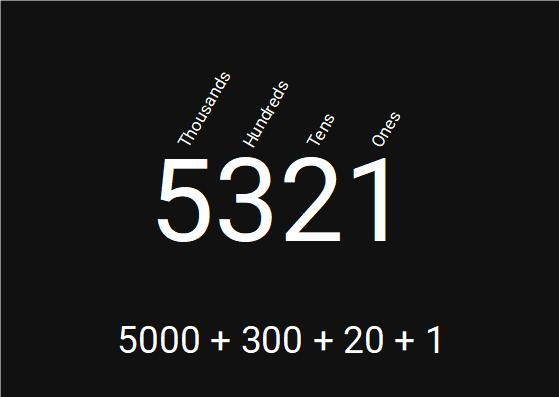
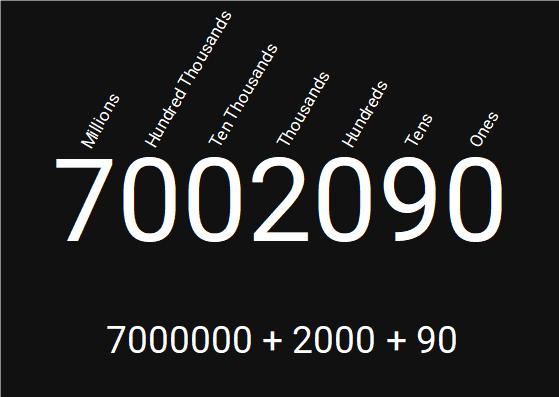
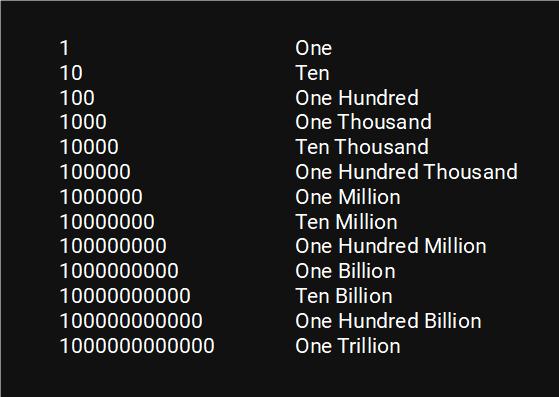
Example 1:
Write down the value of the 4 in the number 9487.
9487 = 9000 + 400 + 80 + 7
The 4 is worth 400.
Example 2:
Write down the value of the 8 in the number 180950.
180950 = 100000 + 80000 + 9000 + 50
The 8 is worth 80000.
Try these:
When we have parts of a whole we also have columns to the right of a decimal point. The first column after the decimal point is called the tenths. Each tenth is worth one tenth of a whole.
In the number 1.3 we have one whole and 3 tenths.
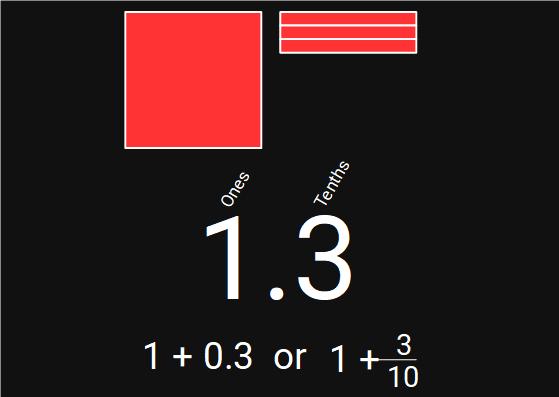
As we have smaller fractions we can keep adding columns to the right. Each column is ten times smaller than the one to its left.
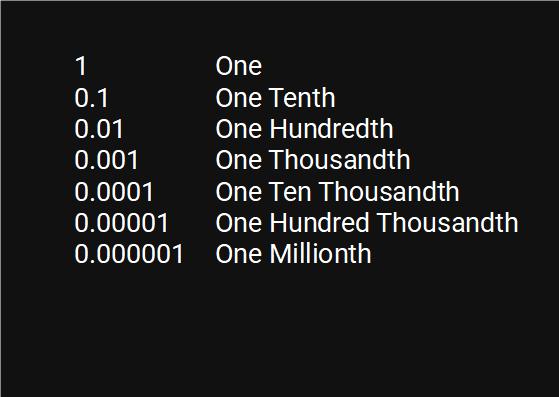
In the number 0.42 we have 4 tenths and 2 hundredths.
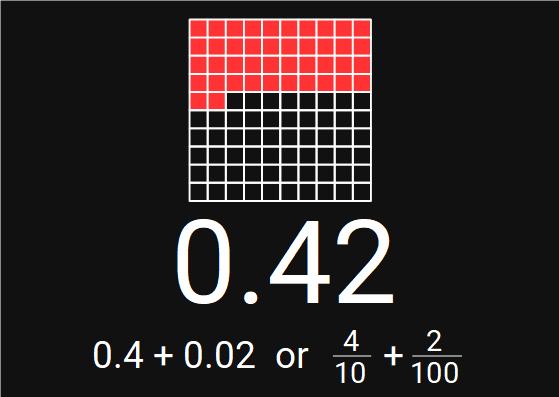
Example 3:
Write down the value of the 4 in the number 9.487
9.487 = 9 + 0.4 + 0.08 + 0.007
The 4 is worth 0.4 or 4 tenths.
Example 4:
Write down the value of the 9 in the number 0.059
0.059 = 0.05 + 0.009
The 9 is worth 0.009 or 9 thousandths.
Try these: